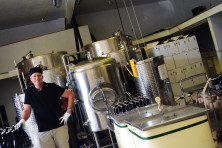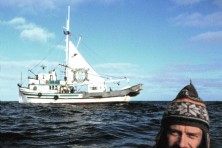The Machine that Didn’t Change the World
- Share
- Tweet
- Pin
- Share
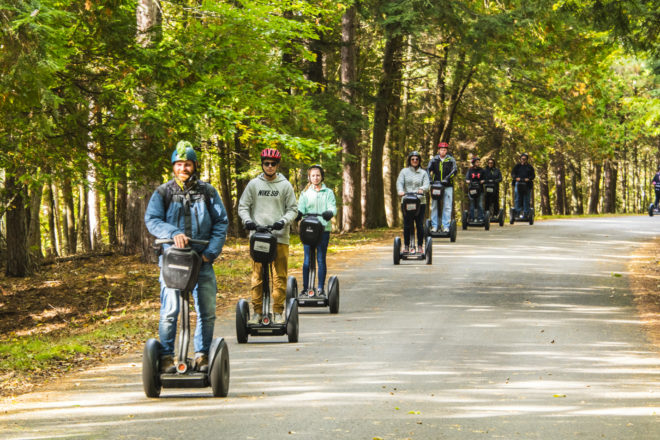
Steve Jobs said it would be as important as the PC. John Doerr, venture capitalist behind Amazon.com, thought it might be bigger than the internet. Instead, we zip around Peninsula State Park, the Sturgeon Bay waterfront and Seaquist Orchards for a few hours during the summer, imagining what past inventors saw when they envisioned the future.
In all of its failure as the reinvention of local transportation, the Segway found a new home in the tourism industry.
“The big reason for that is that they are not allowed [on trails] in national parks, state parks, not even here in county parks,” said Steve Seaquist, owner of Off-Road Segway Adventures. “So where do you ride them? Private land.”
But not everyone has acres of private land to traverse and even fewer people have a Segway.
“I talked to my cousins at Seaquist Orchards and I started out in 2011 giving tours at the orchards,” said Seaquist. “You can come and ride one for $50 and have someplace to go with it. Or you can spend $7,000 and find someplace to ride it. I think that’s one of the reasons it’s been successful in the tourism industry.”
Nick Dokolas, owner of Segway the Door Tours, answers that same question of where to ride a Segway. Segway the Door offers tours on the roads through state and county parks, to see lighthouses and around Sturgeon Bay’s downtown corridor.
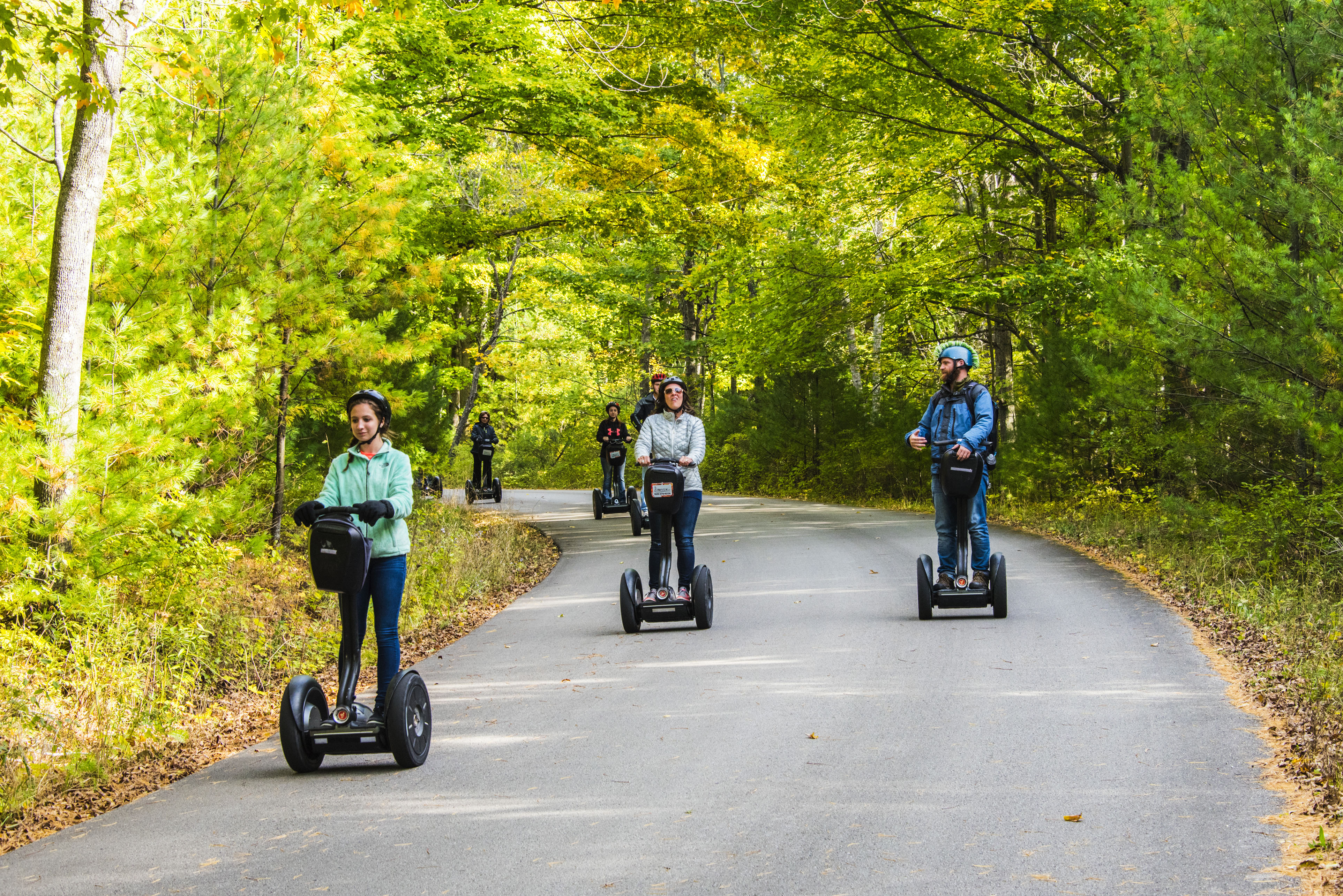
Photo by Len Villano.
“For the normal person, it’s a lot of money for something, especially in the colder climates where you can only ride it for six months of the year,” said Dokolas. “It’s so fun to ride that tours are perfect.”
The niche for the Segway as a tourist attraction was born out of struggles the technology had when trying to market toward the masses. Inventor Dean Kamen was sure corporations and government agencies would clamor for the super-scooter. Mail delivery would be expedited, police patrols would be battery powered, and company executives could oversee their massive warehouses at twice the speed. But after launching in December of 2001, the response was less than exciting. In fact, it was dismal.
Kamen hoped for sales in the billions but in the first six years the company sold only 30,000 units and it has been described as one of the biggest tech failures of the 21st century. Price was one problem, as average consumers were not going to spend more than $4,000 on a device that could only travel 12 miles on a single charge. At that price, the big groups Kamen hoped to attract never took the bait.
The United States Postal Service gave it a shot in 2002, but it didn’t save their mail carriers any time. Mailmen couldn’t sort through mail between stops or hold an umbrella in the rain because the machine required two-handed steering at all times. Police forces found it useful for parking enforcement, but that was about it.
The biggest hurdle, both on the corporate and consumer level, was safety. Segway officials were going to require four hours of training before using the product but didn’t really have a way to administer that, especially when sales went online a year after debuting.
The final nail in the Segway’s coffin was its ambiguity on the road. Was it a vehicle or no more than a battery-powered scooter? Many cities didn’t want them on their sidewalks. Other places would not allow them on the roads. In the end, they weren’t allowed anywhere. Soon they became an expensive joke, with mall cops and police officers riding a Segway for comedic effect on screen.
But they still look fun and that’s where Segway tours have a market.
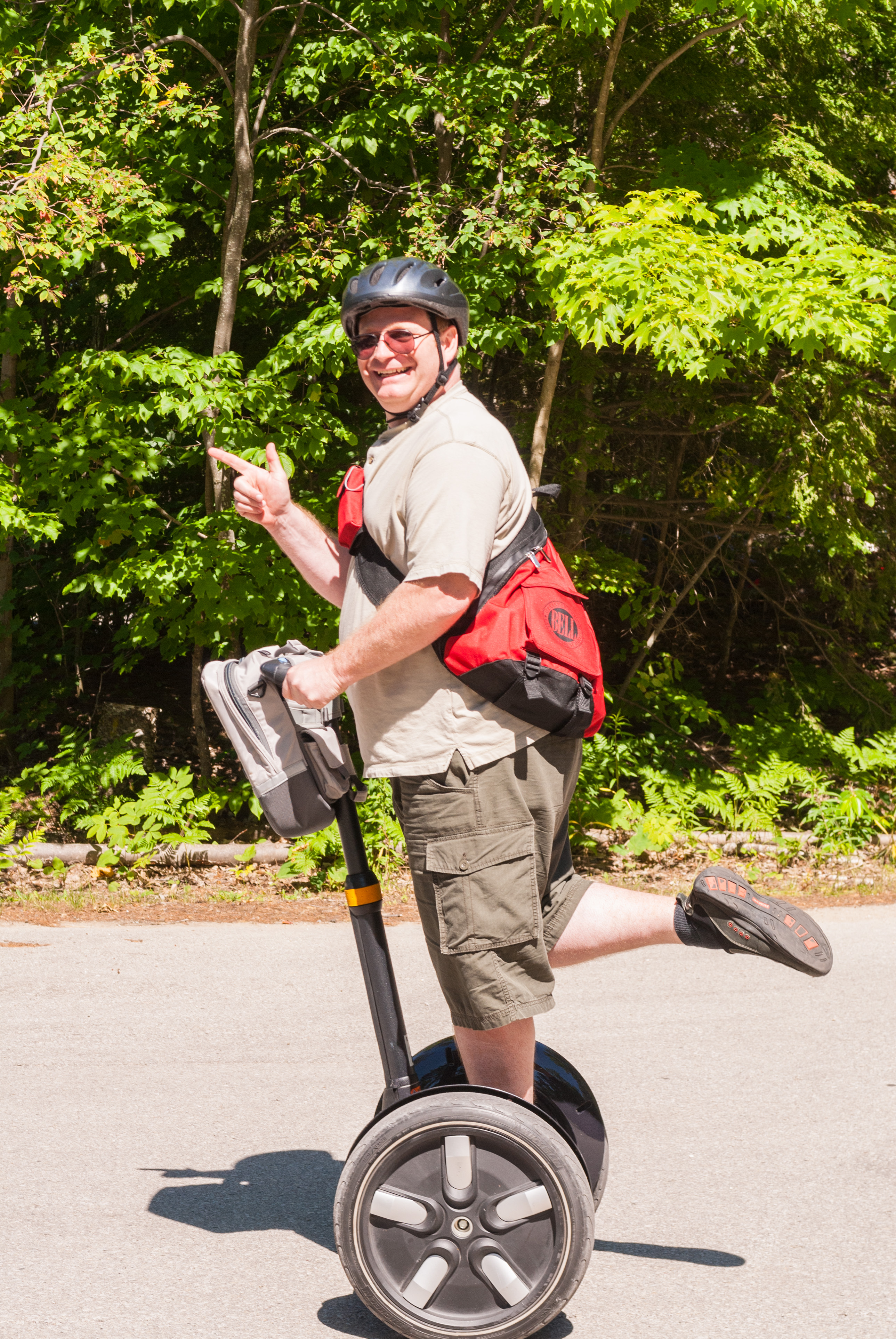
Photo by Len Villano.
Seaquist and Dokolas are able to provide a solution to all the problems the Segway faced. Visitors could ride one for the cheap cost of a tour. Tour leaders can offer the appropriate training. Seaquist has private land to tour in one of the county’s most attractive industries, cherry orchards, while Dokolas could use the winding roads in the county’s rural corners and state parks without much fear of vehicle or pedestrian traffic.
“I guess what I like to think is that it’s so far ahead of its time,” said Seaquist, who is still holding out for the mass integration of the Segway. “There’s very little out there to challenge them technology wise even though it’s been 15 years. It’s still innovative.”
That innovation is still protected today, after Segway filed a lawsuit for patent infringement in 2014. The result in 2016 was a ban on importing “personal transporters” that use the shifting of a person’s weight to move. The folks at Segway are still holding out for a transportation revolution.
“I think Dean Kamen would say that it’s only been 15 years,” said Dokolas.
But for now, Dokolas and Seaquist are happy to tour around the county’s most beautiful landscapes, holding onto the question of what the future might look like in the open air of today.



